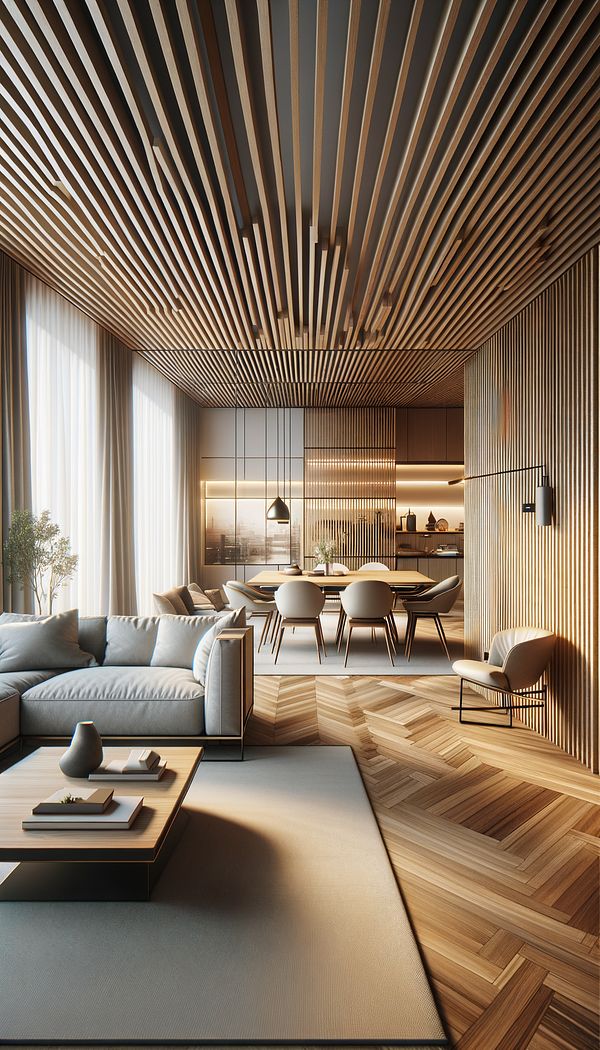What is Slats?
Slats are thin, long pieces of wood, metal, or plastic used in various aspects of interior and exterior design.
Description
Slats are versatile and functional elements that can be found in both interior and exterior design. They consist of thin, long pieces of wood, metal, or plastic and are utilized in a multitude of ways for their aesthetic appeal and practical benefits. Slats can be arranged vertically, horizontally, or diagonally, depending on the design requirements and the effect desired.
In interior design, slats are often used for privacy screens, room dividers, window shades, and wall decoration. They provide a way to partition spaces without completely obstructing light or visibility, creating a sense of openness while still delineating separate areas. Slats can also be applied in facades, garden fences, and outdoor furniture in exterior design, providing both decorative detail and functional support.
The material choice for slats depends on their intended use and the overall design aesthetic. Wood slats add warmth and a natural touch, metal slats offer durability and a sleek modern look, while plastic slats can be a cost-effective and versatile option in various colors.
Usage
Wood slats are commonly used in Scandinavian and Japanese-inspired interiors for their natural, minimalist appeal. Metal slats often appear in industrial and contemporary designs, providing a strong, clean line element. Plastic slats can be found in modern outdoor settings, where durability and color variety are valued.
FAQs
-
Can slats be used for outdoor spaces?
Yes, slats can be utilized in outdoor spaces such as garden fences, patio covers, and as part of outdoor furniture designs for both aesthetic and functional purposes.
-
Do slats offer privacy?
Yes, slats can offer privacy while still allowing light to pass through. The degree of privacy depends on the spacing and arrangement of the slats.
-
Are slats energy efficient?
In some applications, such as window treatments, slats can improve energy efficiency by controlling sunlight ingress and enhancing ventilation, thereby reducing the need for heating or cooling.
Practical Application
When incorporating slats into your design, consider the orientation, material, and spacing to achieve the desired aesthetic and functional outcomes. Vertical slats can emphasize height, while horizontal slats can make a space appear wider. The choice of material should align with the overall design theme, and the spacing of slats should be determined based on the level of privacy or light filtration required.
-
Architectural Elements199 articles
-
Design Styles478 articles
-
Furniture Types599 articles
-
Window Treatments65 articles
-
Materials & Textiles360 articles
-
AmbryAn ambry is a recessed cabinet or niche traditionally used for storage in walls.
-
Synthetic MaterialsSynthetic materials are man-made materials developed through chemical processes.
-
FiligreeFiligree refers to delicate and intricate ornamental work made from fine twisted wires, usually of gold or silver, used in jewelry, metalwork, and interior design elements.
-
AcanthusAcanthus is a decorative motif used in interior design and architecture, characterized by stylized leaves of the Acanthus plant.
-
BurlBurl is a tree growth in which the grain has grown in a deformed manner.
